In This Article
Google Search is always changing, meaning complete visibility over the SERP is a necessity.
As an SEO specialist (or perhaps you are their natural enemy: the PPC specialist) you probably feel good going home for the day comfortable in the knowledge that your client is ranking #1 in organic listings (or paid search) across every single one of your target keywords. And the landing page experience is wonderful because it matches the intent of the search query and is optimized to the nines. Look at you.
We are all well aware that there is a lot more happening in the SERP. You can rank number one organically but still be obfuscated below the fold, especially on mobile devices.
Despite the array of SEM tools at our fingertips (or wallets), a downward-tipping organic traffic trend despite your climbs in organic visibility over the last six months might often leave you scratching your head .
We felt this blind spot in explaining disjointed channel performance and decided to do something about it. We call it Luminr. The idea being to develop a more holistic picture of how much of the SERP brands actually ‘own’ and attribute this to changes in online performance.
What is Luminr?
As a proprietary search intelligence tool, Luminr is a measure of total search ownership across every pixel of page one on Google Search. This means every listing, every feature type, and every ranking URL across the keywords you are focusing on is captured and monitored.
More than that, snapshots are taken so you have a visual comparison of the SERPs for specified dates – want to know what they looked like when you first started tracking keywords vs. what they are now? That’s no problem, and is a goldmine for identifying shifts in intent and opportunities available.
Luminr also monitors your competitors, so instead of just seeing how you’re performing across different elements of the SERP, you can see how your competitors compare as well. That gives you huge insight into what their strategies are, what they are focusing on, and where the gaps are for you to capitalise on.
After going through rigorous internal testing, we’ve rolled the tool out to our clients to help them understand performance and opportunities on a holistic scale. This way, we’re all working from the same data and the same information, and then having conversations about how we can work together in an integrated fashion to capitalise on where the opportunities are.
Whether that means SEO need to focus on capturing additional SERP features, or PPC needs to upweight bidding on particular terms, or we need to drill into competitor content to understand where they are focusing their attentions – Luminr is at the heart of it all.

What can you use Luminr for?
- Monitor actual performance across a set of keywords
- Analyse competitor performance
- Identify new Search competitors and how they differ across different SERP features and channels
- Draw performance benchmarks on estimated click through and total Search coverage
- See how volatile the SERPs are for different keywords
- Understand the intent behind keywords – more SERP features available could indicate a more informational query
- Understand your keyword strengths and weaknesses
- Identify the makeup of the result pages
- Scale keywords being monitored with ease
- Take snapshots of SERPs for weekly, monthly, or quarterly comparisons
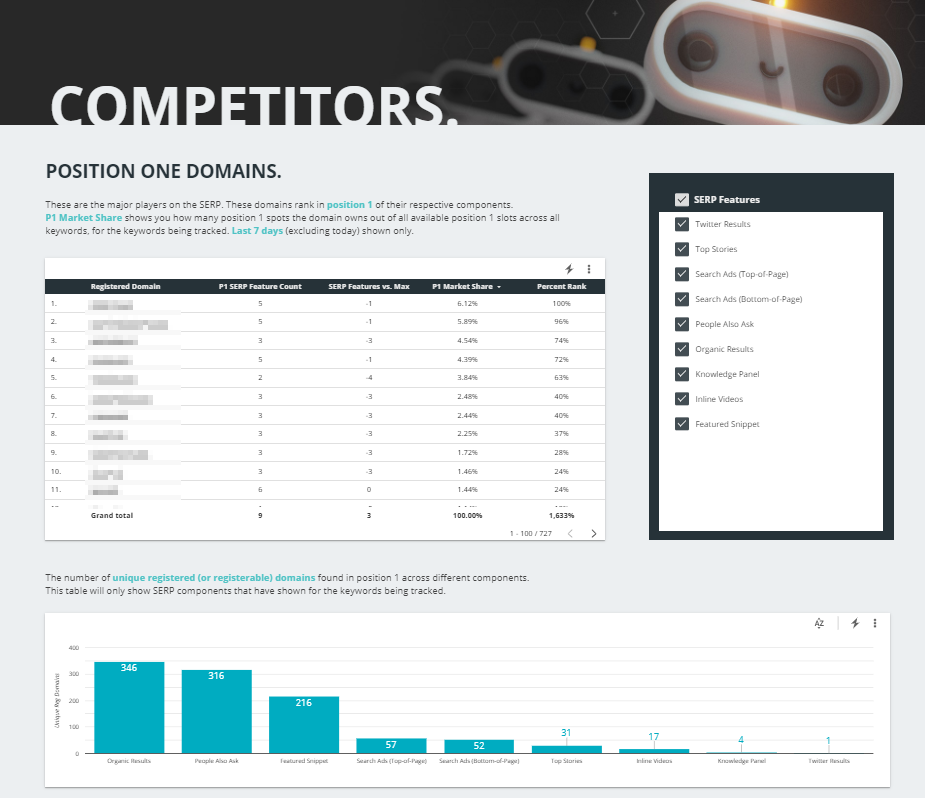
Luminr in Numbers
- Search results collected so far: 1,217,242
- Number of search queries being tracked currently: 9,678
- Number of search queries tracked historically: 42,511
- First-page ranking domains discovered: 70,226
That means, from all of the keywords we’ve monitored, both those we are actively tracking and have done historically, we’ve collected over 1.2 million search results which our teams have scrupulously analysed to identify opportunities and determine focuses.
From that, we’ve also discovered over 70,000 different domains which rank on page one across the keyword sets, giving us much more insight to where the actual competition is rather than just using a list of business competitors from our clients and any that compete in standalone SEO and Paid Search elements.
Principles that underpin SERP Real Estate
Total Search
The SERP is made up of different features that vary wildly between different searches, devices, geographic locations etc.
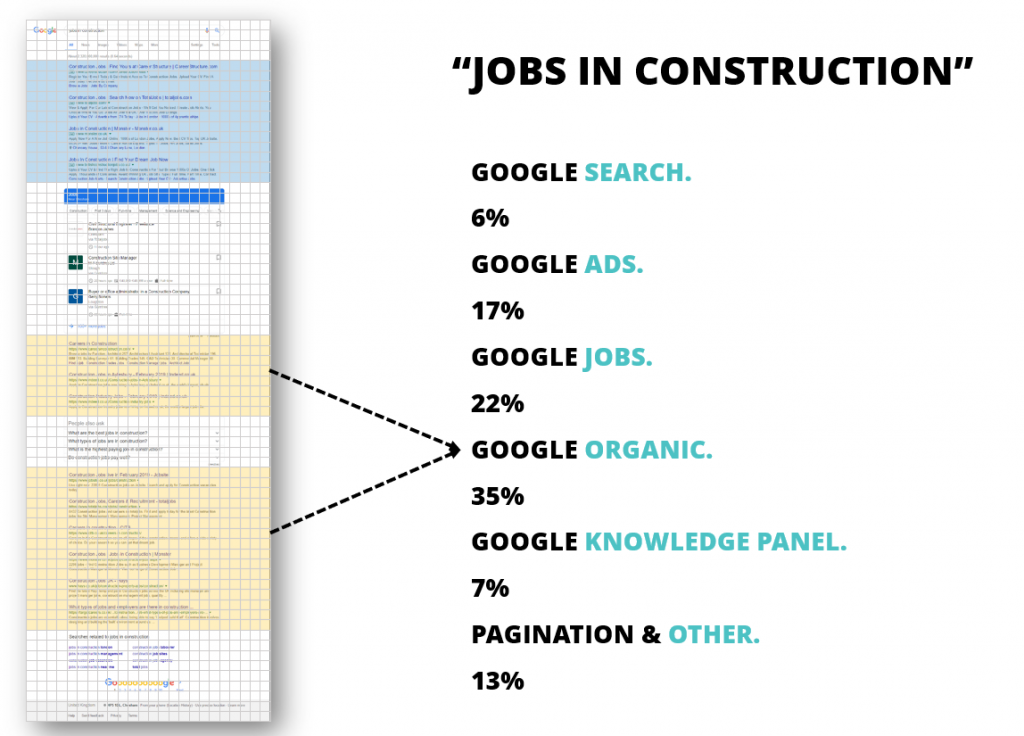
“Total Search” is what we call the difference between how siloed teams report on rank and reality. A user doesn’t care how good your SEO is if they can see a local result, a creative ad and supplementary information above the fold.
We use this information to track a holistic click-through rate: the probability of a user clicking through to your site, given everything that is happening around you on the SERP.
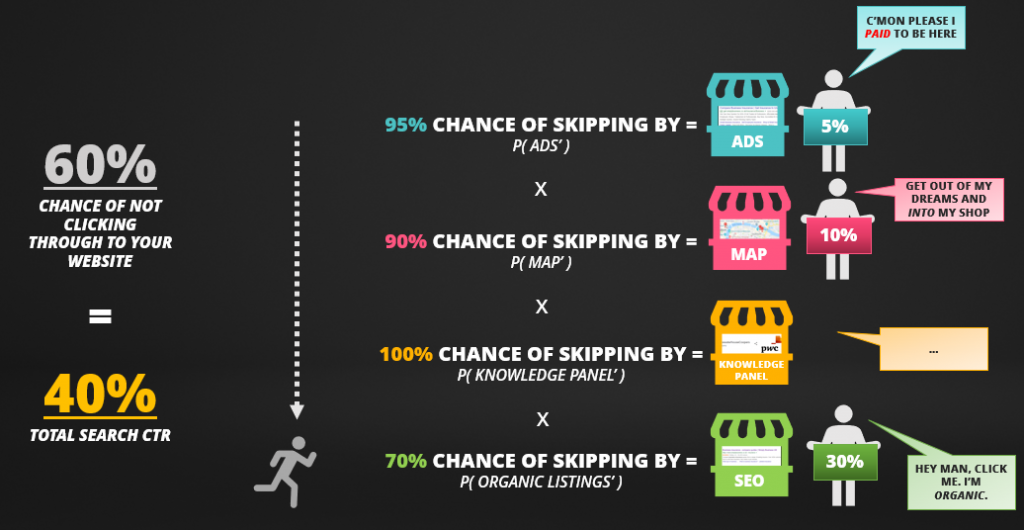
How you can use this:
- Determine the best features to appear in
- Realign focuses with user needs and intent
- Understand where the key opportunities are, per keyword and keyword group
Rank Deviance
We use “rank deviance” to evaluate a search result’s realistic ranking position.
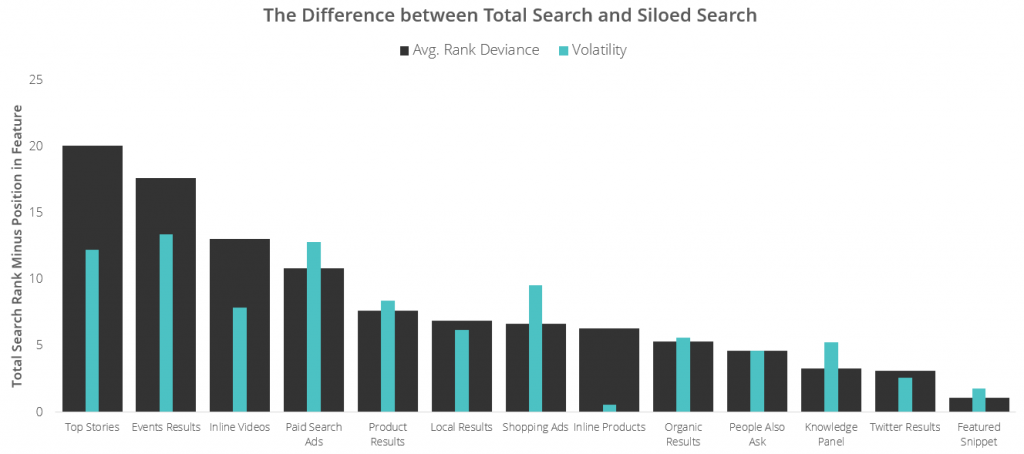
Where we’ve seen the wildest rank deviance is paid search ads, mainly due to their distribution between the top and the bottom of the SERP. Apart from ads, the position of top stories and events on the SERP is highly volatile, often buried 18-20 spaces down. Organic results are far less volatile but appear on average 5-6 positions lower than a purist SEO team might evaluate them to be.
Traditional-type listings are de-prioritised by the appearance of some other SERP features, such as the featured snippet or the knowledge panel. For example, the presence of the featured snippet can reduce the CTR of websites in position one by 5.3% (Source). In the organic space, the total search rank of insurance-related queries were the most volatile, with an upper rank deviance of 20 positions.
How you can use this:
- Understand where rankings actually appear on the result pages – position 1 doesn’t mean you’re top of the page
- Identify likelihood of change once a ranking position is secured
- Identify differences in industries for more specific strategic action
CTR Monitoring
Click through rate is huge across every department – you need to know that if you’re appearing in higher positions you’ll see more traffic come through. While ranking data can show you estimations, SERP Real Estate applies the Total Search principle to understand your true click through rate depending on the features you appear in.
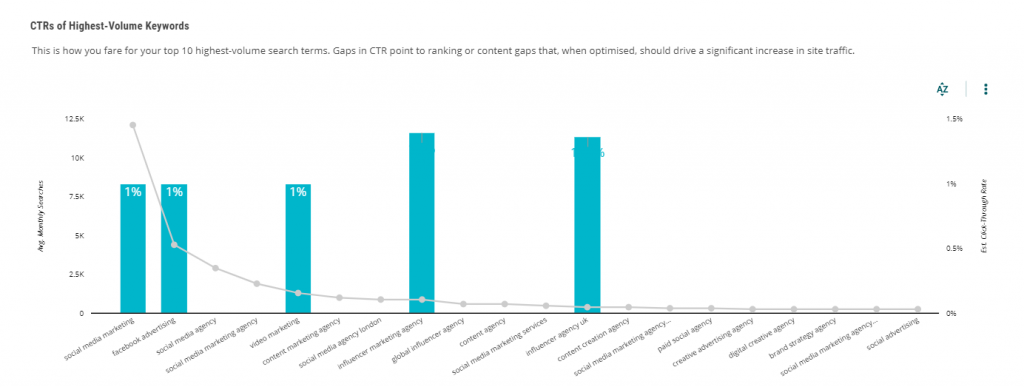
This can be split however you like, from looking at individual keywords right through to your focus portfolios and the keywords within them. Above is an example of how you could drill into the CTR specifically for the highest search volume keywords, looking at how that differs across different terms.
How you can use this:
- Understand the CTR for your focus terms, and monitor it against competitors
- See how CTR changes as you secure different SERP features, not just ranking positions
- Identify issues with your pages – if they’re ranking well, you’re getting into new features, and you’re still not seeing the clicks come through, why is that?
Nobody is Safe
Generally, the rank deviance of the featured snippet is pretty stable around 0-1, appearing exactly where we thought it would.
Our tool does a great job of highlighting the volatility of the SERP.

Source: https://knowyourmeme.com/memes/obama-awards-obama-a-medal
The featured snippet, usually prime real estate and one of the least volatile SERP features, is still not a guaranteed position zero win. Across an array of industries from B2C fashion to B2B cybersecurity, Luminr has flagged the coveted featured snippet dropping below the fold, as far down as position ten. The examples below were captured previously.
Within fashion, we’ve seen the featured snippet rank below position zero 28% of the time, 11% for cybersecurity. Within insurance, the featured snippet rarely holds position zero due to the competitiveness of paid search ads.
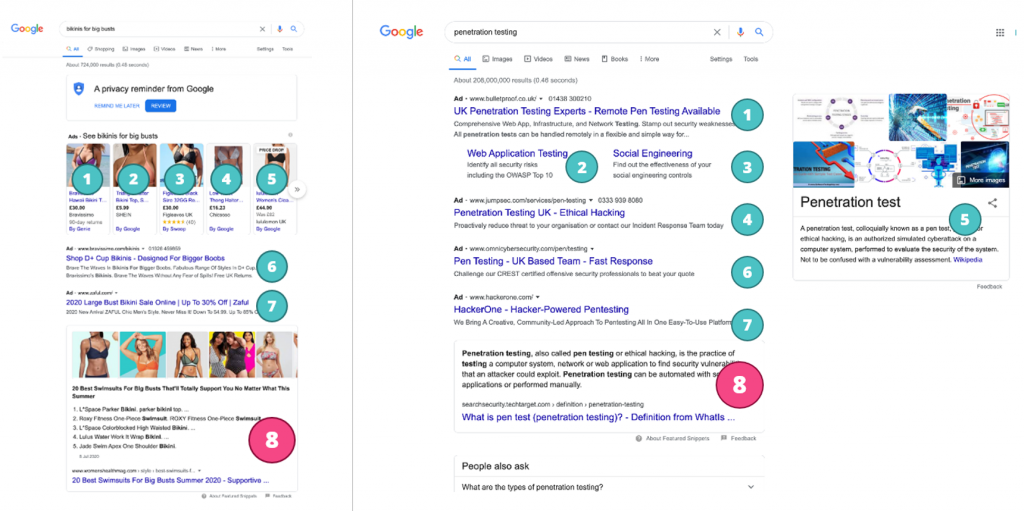
Frenemies
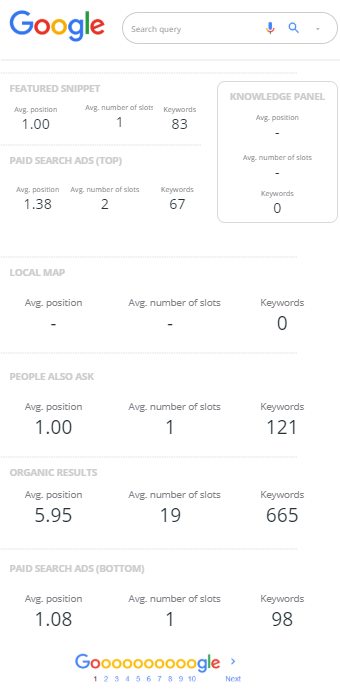
The endgame of our Luminr project is to integrate siloed digital marketing teams to create a fully cohesive winning strategy. We are all about actionable insight through the application of data science to our raw data, especially when we can automate delivery through Slack for real-time insight.
That could mean: deep and comprehensive competitor insights, suggested paid media budgets, or the application of machine learning to help optimise content creation.
SEO and PPC teams are not enemies. They are specialist teams battling in the same arena to fight for the same client’s success. Ranking is a game and Luminr presents teams with a united front in analysing performance in the context of the whole SERP.
In summary, Luminr is a must-have tool for understanding holistic Search performance. Every specialist team can use it to gain insight for their strategies and where their focus needs to be, whether that is SEO looking at new features, PPC looking at where competition is the strongest, or Content looking at what is actually working in the results.
If you want to take advantage of insight and data you won’t find elsewhere on the market, get in touch with our team today.



